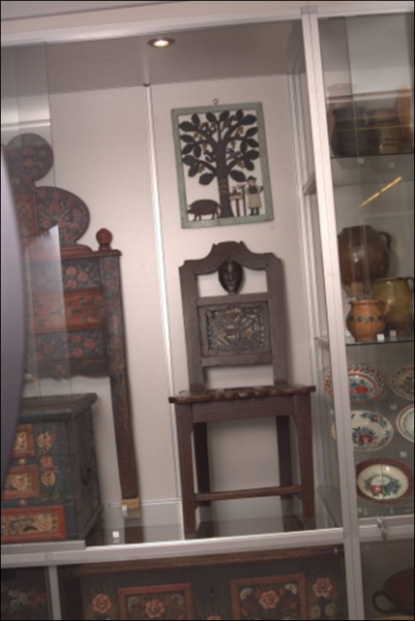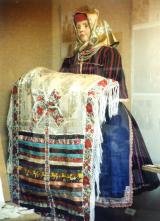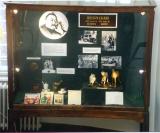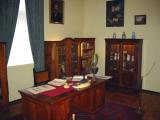2024. April 20. Saturday
Palóc Museum - Balassagyarmat

|
Address: 2660, Balassagyarmat Palóc liget 1.
Phone number: (35) 300-168, (35) 500-133
E-mail: info@palocmuzeum.hu
Opening hours: Sat-Sun 9-16
|
The Museum Union of Nógrád County was formed in Balassagyarmat in 15th March 1891. The main purpose of the union was to search for and colelct everything connected to history, archeology, ethnography and natural science of especially Nógrád county.
The class room of the national school proved too small for the collection, so it was moved to the so-called Gadonyi hous in 1894. However, the inadequacy of this place soon led to the idea of establishing a new museum. A proposal was circulated for making the sketches of the new building in 1910. Out of the 15 candidates the sketches of Walder Gyula were chosen.
The building works began in 1914, but the building was occupied by the authorities between 1917 and 1925. The use of the building for various purposes led to the loss of 80% of the collection and caused a serious damage in the building.
Renovation works were finished in 1926. The Museum Union decided to name the museum after its founder, Iván Nagy. The museum opened before the general public in 29th November 1931.
After 1940 the director of the museum knowingly ignored government regulation about the securing of collections throughout the country. He let German soldiers move into the institute in 1944. As a consequence of this 90% of the collection was lost.
After the war was ended Gyula Krepuska and his co-workers voluntarily took up the work of caring for the museum. They cleared out the rumbles and the dirt, renovated the building and arranged the materials left in the collection.
In 1949 János Manga was nominated as directorof the museum. From this time on regular ethnography works was carried out. They started collecting popular instuments, clothers, materials of shepherd life, feasts and small crafts.
The museum was nationalized in 1950. The name of the museum was changed to Palóc Museum. The centre of the county organization of museums was placed to Salgótarjánba.
Since the 1960'ies several famous researchers have worked here, such as Mária Flórián, Judit Gádor, József Zólyomi and Márta Kapros who is still working here. Gábor Limbacher and Ágnes Lengyel also came to work for the museum in 1986. Main collection target of the museum id popular religion, literacy and traditions. The museum owns a significant ethnography collection. A new trend in the research line of the museum is that of making researches about the Palóc lifestyle.
József Zólyomi
The class room of the national school proved too small for the collection, so it was moved to the so-called Gadonyi hous in 1894. However, the inadequacy of this place soon led to the idea of establishing a new museum. A proposal was circulated for making the sketches of the new building in 1910. Out of the 15 candidates the sketches of Walder Gyula were chosen.
The building works began in 1914, but the building was occupied by the authorities between 1917 and 1925. The use of the building for various purposes led to the loss of 80% of the collection and caused a serious damage in the building.
Renovation works were finished in 1926. The Museum Union decided to name the museum after its founder, Iván Nagy. The museum opened before the general public in 29th November 1931.
After 1940 the director of the museum knowingly ignored government regulation about the securing of collections throughout the country. He let German soldiers move into the institute in 1944. As a consequence of this 90% of the collection was lost.
After the war was ended Gyula Krepuska and his co-workers voluntarily took up the work of caring for the museum. They cleared out the rumbles and the dirt, renovated the building and arranged the materials left in the collection.
In 1949 János Manga was nominated as directorof the museum. From this time on regular ethnography works was carried out. They started collecting popular instuments, clothers, materials of shepherd life, feasts and small crafts.
The museum was nationalized in 1950. The name of the museum was changed to Palóc Museum. The centre of the county organization of museums was placed to Salgótarjánba.
Since the 1960'ies several famous researchers have worked here, such as Mária Flórián, Judit Gádor, József Zólyomi and Márta Kapros who is still working here. Gábor Limbacher and Ágnes Lengyel also came to work for the museum in 1986. Main collection target of the museum id popular religion, literacy and traditions. The museum owns a significant ethnography collection. A new trend in the research line of the museum is that of making researches about the Palóc lifestyle.
József Zólyomi



